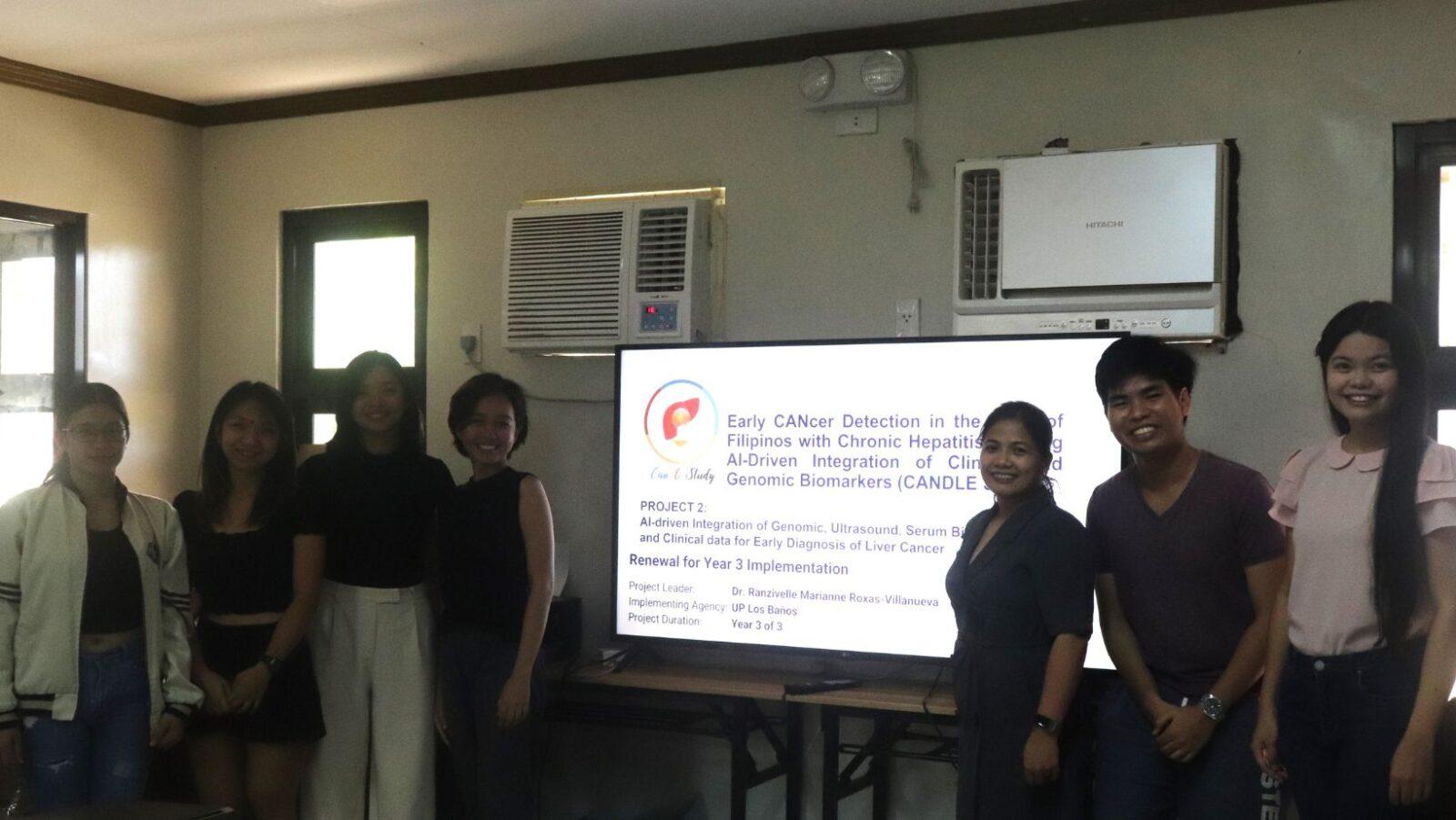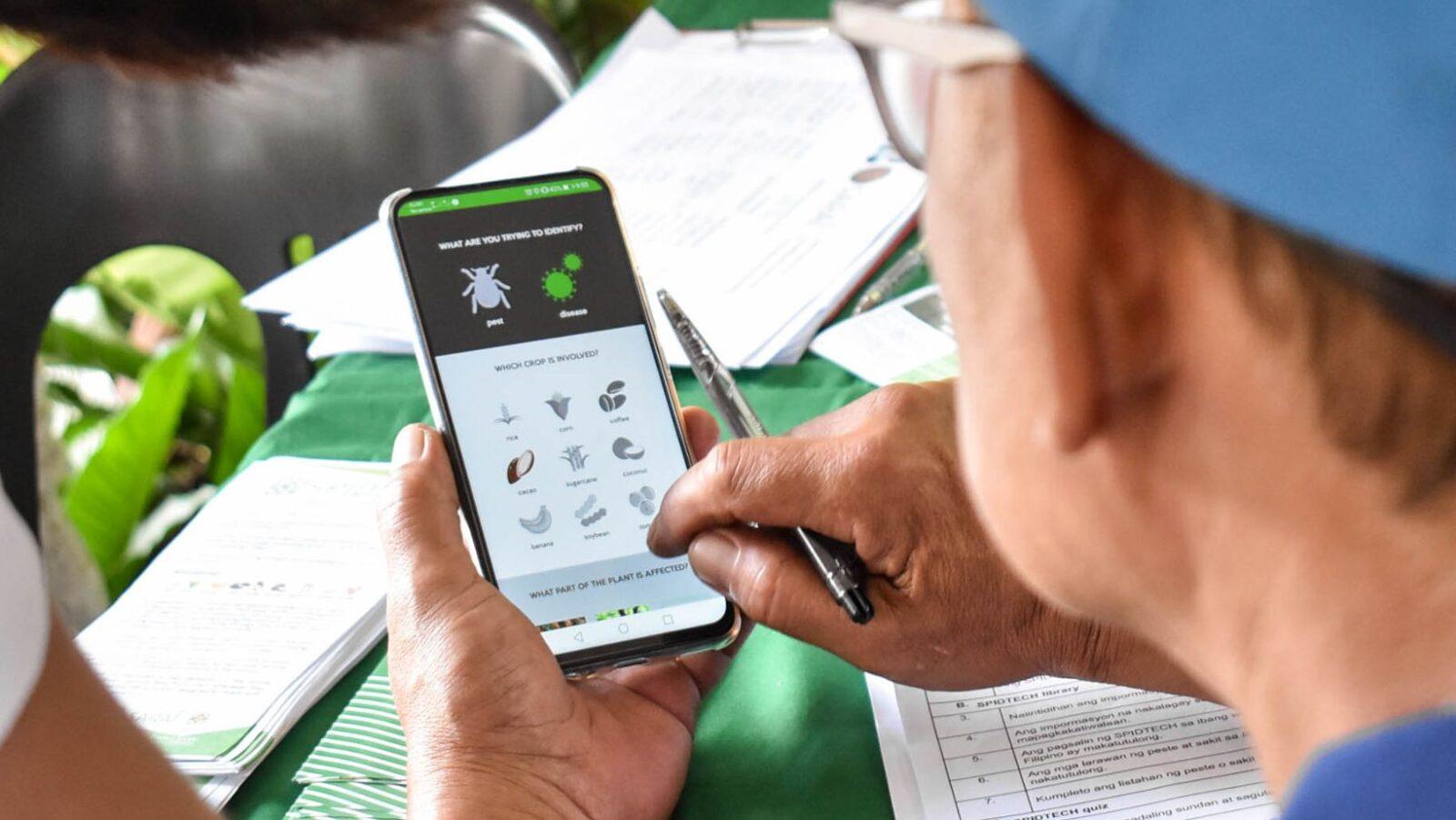(Updated on November 27, 2019) Manny Pacquiao, Lea Salonga, Pia Wurtzbach: These are but a few of the names that come to mind when we are asked about the Philippines’ contributions to the international scene.
We tend to value our celebrities tremendously. For many of us, they offer an escape from the harsh realities we face as a developing country: typhoons and flooding, the irresponsible and unfair treatment of laborers, and even corruption in the government.
There is nothing inherently wrong with idolizing celebrities. In doing so, however, we sometimes fail to notice Filipinos who have made significant contributions to science and technology.
Furthermore, due to over 300 years of subjugation, the concept of colonial mentality remains present in our society, whether we’d like to admit it or not. Many of us seem to believe that international products are better than those made by Filipinos. This may understandably be disheartening and even debilitating for some of our local thinkers and creatives. Nevertheless, this has not stopped Filipino innovators from finding ways to help society as a whole, and from using science as a means to elevate the standards of living.
Here are some Filipino inventions and ‘tatak Pinoy’ discoveries that may surprise and even inspire the innovator in you.
Filipino invention #1: Bamboo incubator
Often, life finds a way — sometimes, even earlier than expected. Premature babies (infants born before the mother’s 37th week of pregnancy) are typically underdeveloped and low in body fat percentage, inhibiting their ability to maintain their normal body temperature. The modern medical incubator addresses this; however, not all people who need it have access to such technology. This is a particularly serious problem in rural areas, where such devices are generally inaccessible.
Fortunately, a solution came in the form of the first Filipino invention on this list: the bamboo incubator, widely credited as the brainchild of Dr. Fe del Mundo. This makeshift device is relatively inexpensive and easy to reproduce, making it ideal for use in rural communities and areas with no electricity. Developing this ingenious take on a life-saving machine, though, is far from her only accomplishment. In 1936, Dr. del Mundo became a Research Fellow in Pediatrics at Harvard Medical School.
In addition, Dr. Del Mundo was the first woman to be recognized as a National Scientist here in the Philippines, way back in 1980. In addition to all that, her passion for pediatrics and medicine led her to establish the Children’s Medical Center, the first pediatric hospital in the Philippines. Truly, Dr. del Mundo is a pioneer thinker, and an inspiration for Filipino women.
Filipino invention #2: Erythromycin
Antibiotics are typically prescribed to us by our doctors as a remedy to ailments caused by microorganisms such as bacteria or fungi. Nowadays, most antibiotics are synthetically created in laboratories by pharmacists and chemists. Before the onset of modern medicine, however, humans depended on nature in order to deal with disease-causing microorganisms.
The first-ever antibiotic, Penicillin, was discovered by Alexander Fleming in 1926 after a mould termed Penicillium notatum contaminated one of his experiments. That kicked off a race to discover all sorts of antibiotics from plants, insects, and even marine organisms.
Many followed this path to discovery, including Dr. Abelardo Aguilar. In 1949, via soil samples he obtained from his backyard, Dr. Aguilar stumbled upon 𝘚𝘵𝘳𝘦𝘱𝘵𝘰𝘮𝘺𝘤𝘦𝘴 𝘦𝘳𝘺𝘵𝘩𝘳𝘢𝘦𝘶𝘴 (now 𝘚𝘢𝘤𝘤𝘩𝘢𝘳𝘰𝘱𝘰𝘭𝘺𝘴𝘱𝘰𝘳𝘢 𝘦𝘳𝘺𝘵𝘩𝘳𝘢𝘦𝘢), the bacteria that would lead to the discovery of erythromycin. Erythromycin is an antibiotic used in treating infections of the respiratory tract, Legionnaire’s disease, and diphtheria, as well as urinary tract infections and sexually transmitted diseases such as syphilis.
During that time, Dr. Aguilar worked under Eli Lily Co., a pharmaceutical company from the United States. The company marketed erythromycin under the brand name Ilosone, earning billions of dollars from the drug. Unfortunately, international patent laws stood in the way of him getting his fair share of the fruits of his discovery. His 40-year struggle to receive royalties from the drug he discovered ended when he died at the age of 76.
As former Philippine Health Secretary Juan Flavier put it: “Dr Aguilar has contributed so much in the discovery of erythromycin. It is sad to hear that he got nothing out of it.”
Filipino invention #3: Challenge 21
Even in this digitally connected age, people still love playing board games. You’ve probably tried some of the more popular ones, such as chess, checkers, Monopoly, Scrabble, Game of the Generals, or Snake and Ladders.
Chances are you may have heard of — or perhaps even tried — Challenge 21, a relatively new board game invented by, you guessed it, a Filipino. The mind behind this remarkable Filipino invention is Mr. Leonardo Meija Yu, a 68-year-old retired economics professor and Philippine Ports Authority officer.
The board game borrows and incorporates aspects from games such as tic-tac-toe, scrabble, bingo, chess, and (according to the creator himself) even basketball. The game, which can be played by up to 4 players, was designed to promote and develop abstract thinking, observation, and impromptu strategizing.
Mr. Yu has received recognition for his invention, including the TUKLAS Award at the National Invention Contest and Exhibit (NICE) in Pasay City.
Filipino invention #4: Mango flowering
The Philippines is a major source of mangoes in the world. With $91 million worth of exports in 2015 alone, the country ranks seventh in the global market. Regions such as Ilocos, Central Luzon, and Western Visayas are among the country’s biggest producers of this seasonal fruit. The operative word here, of course, is “seasonal,” as mangoes only flower during a specific period in the year. For quite some time, Filipinos relied on smudging –the use of smoke from burning materials — to keep up with the demand for mangoes.
National Scientist Ramon Barba, however, had a different idea.
Barba believed that smudging was tedious and expensive. Furthermore, the process also emits pollutants into the atmosphere. He proposed an alternative: the use of a chemical spray called Etherel (2-chloroethylphosphonic acid). His idea was met with derision and rejected for experiments, until one day, his friends Mr. and Mrs. Jose Quimson allowed him to conduct a trial using 400 mango trees. And the rest, as they say, is history.
In 2008, a documentary from the World Intellectual Property Office highlighted Barba’s discovery:
The prolific mango production in the Philippines is due in large measure to the ingenuity of one man (Barba) … His invention, widely used today, revolutionized the Philippine mango industry, making the crop one of the country’s top export earners.”
Even though Barba held the patent to the process, he charged no royalties for it. With the chemical being cheap and readily accessible, this allowed many mango farmers to benefit from his idea, leading to the boom in the mango industry that we enjoy today.
Filipino invention #5: The PC chipset
At this point, electronics have gone beyond being a simple human “want”; in fact, some may argue that in today’s society, they have become a need.
Students, for instance, use their smartphones to connect with friends, to entertain themselves, or to do research on the go. Laptops are also absolutely critical in the completion of their academic requirements. These devices and many more help us build ties, work anywhere, and access information in just a few clicks. All of these, of course, are 21st-century necessities.
Would you believe, though, that a Filipino played a key role in the decades-long development of these high-tech devices?
Back in the day, companies were less about reducing the size of your gadget and more about implementing the basics: processing data and presenting it to the user in an appreciable form. That changed, however, after Diosdado Banatao, a native from Cagayan Valley, developed the first single-chip 16-bit microprocessor-based calculator in the 1970s. He went on to create the world’s first system logic chip sets in 1981, which allowed the integration of all of a computer’s essential data processing features into a small package. He did not stop there, though. Banatao eventually came up with the first Windows Graphics accelerator chip for personal computers. Thanks to these breakthroughs, he earned himself a permanent place in the history of PC development.
Today, Banatao serves as the chairman of the board of directors for Inphi, a company specializing in advanced semiconductor and Silicon photonics solutions. In addition, he founded the Philippine Development Foundation (PhilDev), a nonprofit organization aiming to eliminate poverty through the use of education, innovation, and entrepreneurship. -MF
Editor’s note: An earlier version of this article erroneously claimed that Dr. Fe del Mundo invented the medical incubator. She did not invent the device; however, she developed a bamboo version of it for rural communities that is significantly less expensive, is easier to assemble, and does not require electricity. The article has been edited to reflect this.
REFERENCES
- 11 Filipino Inventions and their Inventors. Live in the Philippines. [accessed 2018a Jun 14]. https://liveinthephilippines.com/content/11-filipino-inventions-and-their-inventors/.
- dmin1. The Philippines in the Mango Global Value Chain. Securing The Future of Philippine Industries. [accessed 2018 Jun 15]. http://industry.gov.ph/global-value-chain-studies/the-philippines-in-the-mango-global-value-chain/.
- Alexander Fleming Discovery and Development of Penicillin – Landmark. American Chemical Society. [accessed 2018b Jun 15]. https://www.acs.org/content/acs/en/education/whatischemistry/landmarks/flemingpenicillin.html.
- Andrade JI. 2014 Aug 24. National scientist Ramon Barba made country world’s second biggest mango producer. [accessed 2018 Jun 14]. http://newsinfo.inquirer.net/632148/national-scientist-ramon-barba-made-country-worlds-second-biggest-mango-producer.
- Bellis M. Learn More About Fe Del Mundo. ThoughtCo. [accessed 2018 Jun 15]. https://www.thoughtco.com/filipino-doctor-fe-del-mundo-1991718.
- Bird C, RN. How an Incubator Works in the Neonatal ICU. Verywell Family. [accessed 2018 Jun 15]. https://www.verywellfamily.com/what-is-an-incubator-for-premature-infants-2748445.
- Challenge 21: A truly engrossing Pinoy board game. [accessed 2018 Jun 15]. http://www.science.ph/full_story.php?type=News&key=10456:challenge-21-a-truly-engrossing-pinoy-board-game.
- CHALLENGE 21 Imbensyong Pinoy – Mr. Leonardo Mejia Yu at SP Session Hall | General Santos City – 18th Sangguniang Panlungsod. [accessed 2018c Jun 15]. http://www.spgensantos.ph/challenge-21-imbensyong-pinoy-mr-leonardo-mejia-yu-at-sp-session-hall/.
- Dado Banatao: Success Story of Filipino inventor and tech innovator. [accessed 2018 Jun 27]. http://primer.com.ph/business/2017/06/14/dado-banatao-success-story-of-filipino-inventor-and-tech-innovator/
- Erythromycin: MedlinePlus Drug Information. [accessed 2018 Jun 15]. https://medlineplus.gov/druginfo/meds/a682381.html.
- Highlights of the Foreign Trade Statistics for Agricultural Commodities : Philippines, 2016 | Philippine Statistics Authority. [accessed 2018d Jun 15]. https://www.psa.gov.ph/content/highlights-foreign-trade-statistics-agricultural-commodities-philippines-2016.
- How antibiotic is made – material, history, used, processing, components, composition, structure, procedure, steps. [accessed 2018e Jun 15]. http://www.madehow.com/Volume-4/Antibiotic.html.
- Jr AICN. Tax incentives of Filipino inventions. BusinessMirror. [accessed 2018 Jun 14]. https://businessmirror.com.ph/tax-incentives-of-filipino-inventions/.
- Legacy :: Fe Del Mundo Medical Center | Hospital Quezon City. [accessed 2018f Jun 15]. https://www.fedelmundo.com.ph/history-legacy/.
- MEDICINE-PHILIPPINES: Who Really Discovered Erythromycin ? (1) An Inter Press Service Feature | Inter Press Service. [accessed 2018g Jun 14]. http://www.ipsnews.net/1994/11/medicine-philippines-who-really-discovered-erythromycin-1-an-inter-press-service-feature/.
- News DP ABS-CBN. PH third happiest country in the world – Gallup survey. ABS-CBN News. [accessed 2018 Jun 15]. http://news.abs-cbn.com/focus/01/02/18/ph-third-happiest-country-in-the-world-gallup-survey.
- Ramon Barba – Biography, Facts and Pictures. [accessed 2018h Jun 14]. https://www.famousscientists.org/ramon-barba/.
- The-Philippines-in-the-Mango-Global-Value-Chain.pdf. [accessed 2018i Jun 15]. http://industry.gov.ph/wp-content/uploads/2017/08/The-Philippines-in-the-Mango-Global-Value-Chain.pdf.
- Today in Philippine history, August 6, 2011, Fe Del Mundo died of cardiac arrest. [accessed 2018 Jun 28]. https://kahimyang.com/kauswagan/articles/1681/today-in-philippine-history-august-6-2011-fe-del-mundo-died-of-cardiac-arrest.
Author: Rafael Ambag
A science kid at heart, Paeng aims to spark the interest of the common man in science through science journalism and organizing science camps for elementary children. He is an incoming freshman under UP Diliman’s BS Molecular Biology and Biotechnology program.







